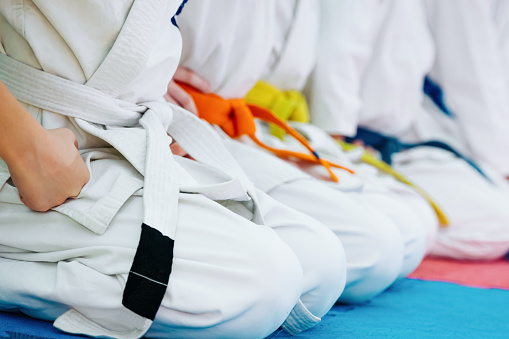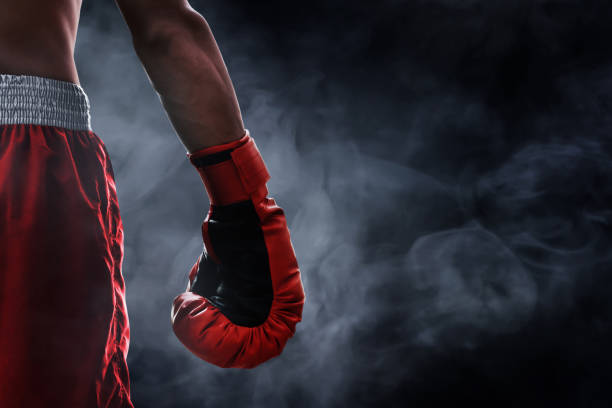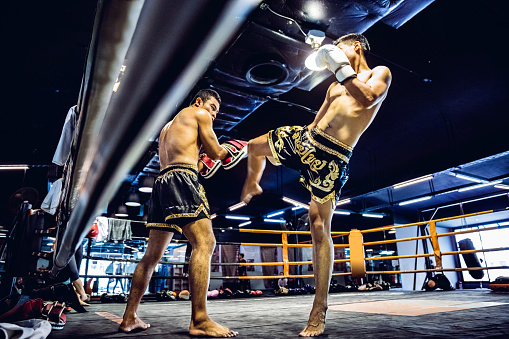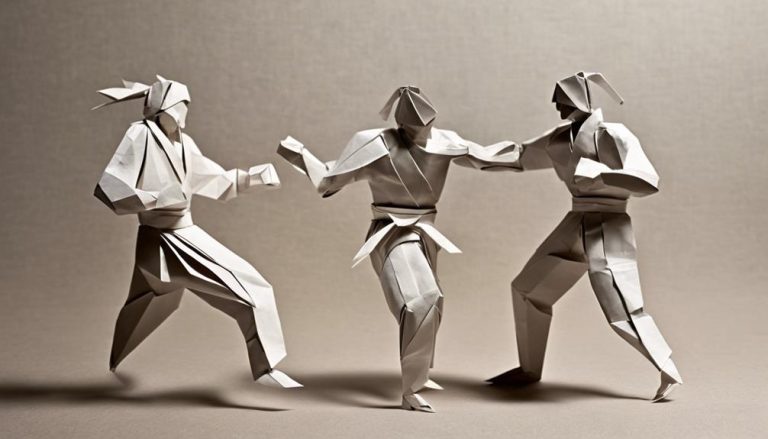General Rules of Savate Sport
As you step into the ring of Savate sport, it's like entering a strategic dance where every move counts. From the scoring system to the defensive techniques, there's a world of rules that govern this martial art. But have you ever considered the subtle nuances behind each strike and defensive maneuver? Understanding the intricacies of Savate's regulations can truly elevate your appreciation for the sport. Let's unravel the layers of this dynamic combat discipline together.
Scoring System

When you're competing in Savate sport, understanding the scoring system is essential for achieving success. In Savate, the scoring system is based on the effectiveness of your strikes and kicks. Judges award points based on the precision, power, and frequency of your offensive techniques. To score points, you need to execute techniques with proper form and accuracy. The judging criteria emphasize clean hits on valid target areas, such as the head or torso, while showcasing control and skill.
Offensive techniques play a significant role in earning points in Savate. Techniques like the fouetté (roundhouse kick) and chassé (front kick) are essential for scoring effectively. Training drills focus on improving the speed and accuracy of these techniques to maximize your scoring potential. Practicing combinations of kicks and strikes will enhance your ability to score points during matches.
Understanding the scoring system is crucial for strategic planning during bouts. By mastering the judging criteria, you can tailor your training to emphasize the techniques that will earn you the most points. Consistent practice of offensive techniques and refining your skills through specific training drills will ultimately lead to success in Savate competitions.
Weight Classes
Let's tackle the crucial aspect of weight classes in Savate sport. Understanding weight class categories, weigh-in procedures, and weight advantage strategies is essential for strategizing your approach in matches. These points play a significant role in ensuring fair competition and maximizing your chances of success in the ring.
Weight Class Categories
Weight class categories in Savate sport are essential for ensuring fair competition among athletes of similar sizes and weights. When it comes to preparing for a match, training techniques and weight management play a crucial role. Athletes often focus on optimizing their nutrition with tips like maintaining a balanced diet and staying hydrated. Weight cutting is a common practice among fighters to meet specific weight class requirements. However, it's essential to approach this process safely and responsibly to avoid any negative impacts on performance or health. By understanding the weight class categories and following proper training techniques, nutrition tips, and weight management strategies, athletes can compete at their best while maintaining a level playing field.
Weigh-In Procedures
To ensure fair competition and compliance with weight class requirements, athletes must undergo specific weigh-in procedures before Savate matches. Hydration protocols are crucial for fighters to follow before the weigh-in, ensuring they are within their designated weight class. Pre-fight preparation involves monitoring weight closely to avoid any surprises on the day of the competition. Athletes often adhere to strict dietary restrictions leading up to the weigh-in to meet the required weight. Post weigh-in strategies include rehydration and refueling to prepare the body for the upcoming bout effectively. Understanding and managing weight fluctuations play a significant role in an athlete's success in Savate, making the weigh-in procedures a critical aspect of the sport.
Weight Advantage Strategies
Navigating through different weight classes in Savate requires strategic planning and understanding of how to leverage weight advantages effectively. When facing opponents with a weight advantage, remember these key strategies:
- Speed advantage, footwork tactics: Focus on agility and swift movements to outmaneuver heavier opponents.
- Counter attacking strategies, stamina management: Utilize quick counters and efficient energy expenditure to wear down your opponent over time.
- Strategic distancing, precision striking: Maintain a safe distance to avoid being overwhelmed and capitalize on precise strikes to exploit openings effectively.
Ring Dimensions
When it comes to the ring dimensions in Savate sport, the size of the ring, the height of the corner posts, and the material of the canvas are key points to consider. Ensuring the ring is of the correct dimensions is essential for fair play and safety during matches. The corner post height and canvas material also play crucial roles in maintaining the integrity of the ring during intense bouts.
Ring Size
Ring size in Savate sport typically remains consistent across different competition levels to ensure fairness and standardization. When it comes to the ring size used in Savate competitions, there are a few key points to consider:
- Standard Dimensions: The ring size is usually 7 meters by 7 meters, providing enough space for movement and footwork techniques.
- Safety Requirements: The ring must have appropriate padding and be free of any hazards to ensure the safety of the competitors.
- Visibility: The ring boundaries should be clearly marked to help participants stay within the designated fighting area.
These factors contribute to creating a level playing field for all Savate athletes, allowing them to showcase their skills effectively.
Corner Post Height
To ensure proper setup of the ring for Savate competitions, it is essential to consider the corner post height. Safety precautions are crucial when it comes to the corner post height, as it directly impacts the safety of the athletes during the match. The corner posts should be securely fixed to the ground and have padding to prevent injuries. Equipment requirements for the corner post height include durable materials that can withstand impact. Training drills should focus on proper footwork around the corner posts to avoid collisions and maintain balance. Technique focus should emphasize using the corner post strategically for support while executing kicks. By paying attention to these details, you can ensure a safe and effective Savate ring setup.
Canvas Material
For optimal Savate ring dimensions, the canvas material plays a critical role in ensuring a suitable surface for the competitors.
- Canvas durability: The canvas should be durable enough to withstand the rigorous movements and footwork of the athletes during the match.
- Cleaning techniques: Regular cleaning of the canvas is essential to maintain a hygienic environment for the fighters. It helps in preventing the accumulation of dirt and sweat, ensuring a safe and clean surface for combat.
- Maintenance: Proper maintenance of the canvas material, such as checking for tears or wear, is necessary to avoid any potential hazards during bouts. Regular inspections can help prolong the lifespan of the canvas and provide a secure playing area for the fighters.
Time Limits
In Savate sport, competitors must adhere to specified time limits during matches to ensure fairness and efficiency. Round durations in Savate matches typically last for two minutes each, with short break times of one minute in between rounds. These time intervals are carefully structured to maintain the pace of the match while allowing fighters a brief moment to recover and strategize for the next round.
In the event that a match ends in a draw or a tie, Savate has specific overtime rules in place to determine the winner. Overtime periods can vary but commonly consist of one or more additional rounds with shorter durations. These extensions serve to break the deadlock and ensure that a clear victor emerges from the contest.
It's essential for participants to be aware of these time limits and overtime regulations to adapt their fighting styles accordingly. Understanding how to manage energy levels, pacing, and tactics within the defined time constraints can be a crucial factor in achieving success in Savate competitions. By respecting and utilizing the time limits effectively, fighters can maximize their performance and showcase their skills to the best of their abilities.
Attire Requirements

Competitors in Savate sport are required to adhere to specific attire guidelines to ensure safety and maintain the integrity of the competition. When preparing for a match, make sure you pay attention to the following attire requirements:
- Shoe choice: Opt for shoes specifically designed for Savate to provide proper support and protection during the match.
- Glove color: Ensure your gloves comply with the designated colors outlined by the competition rules to maintain uniformity and fairness.
- Hair regulations and uniform fit: Keep your hair securely tied back to prevent interference during the match. Additionally, ensure your uniform fits well to prevent any hindrance to your movement and performance in the ring.
Adhering to these attire guidelines not only ensures a level playing field but also contributes to the overall safety and professionalism of the sport. By following these rules diligently, you can focus on showcasing your skills and techniques without any distractions. Remember, proper attire not only reflects respect for the sport but also plays a crucial role in your comfort and performance during the competition.
Prohibited Strikes
When engaging in Savate sport, it is crucial to be aware of the specific strikes that are prohibited during competition to maintain safety and uphold the rules of the sport. In Savate, certain kick techniques are considered illegal and are strictly prohibited. These include strikes with the knee, shin, or instep, as they pose a higher risk of causing serious injury to your opponent. Additionally, using the elbow or any other part of the body besides the foot to strike your opponent is strictly forbidden.
To ensure a fair and safe competition, it is important to only target the legal areas when executing strikes. Legal targets in Savate include the head, torso, and legs of your opponent. Striking these areas with proper techniques not only keeps the match within the rules but also minimizes the risk of causing unnecessary harm. Remember, Savate is a sport that values both skill and respect for your opponent, so it is essential to adhere to these guidelines.
When your opponent launches an attack, it is crucial to refrain from using prohibited strikes as counters. Instead, focus on utilizing legal techniques to effectively defend yourself and respond to their moves. By understanding and respecting the rules regarding prohibited strikes, you contribute to a safe and enjoyable Savate experience for all participants.
Defensive Techniques

To enhance your defensive skills in Savate sport, mastering various blocking and evasion techniques is essential. When it comes to defense in Savate, being able to effectively block and evade your opponent's attacks is crucial. Here are some key defensive techniques to focus on:
- Counter attacks: Utilize counter attacks as a defensive strategy. Instead of simply blocking or evading, you can turn your opponent's strikes into opportunities for your own attacks. This not only defends against incoming strikes but also allows you to maintain offensive pressure.
- Blocking techniques: Practice different blocking techniques to protect yourself from your opponent's kicks and punches. Whether it's a high block to defend against head-level kicks or a low block to stop lower strikes, mastering various blocking methods is essential for a strong defense.
- Defensive footwork and parrying moves: Work on your footwork to move out of the line of attack and create angles that make it difficult for your opponent to hit you. Additionally, practice parrying moves to redirect your opponent's strikes away from you, creating openings for counterattacks.
Judging Criteria
Mastering the judging criteria in Savate sport involves understanding the specific parameters that determine the outcome of a match. When it comes to evaluating a Savate match, judges focus on various key aspects of the fighters' performance. Here's a breakdown of the judging criteria:
| Judging Criteria | Description |
|---|---|
| Technique Precision | The accuracy and effectiveness of the strikes and defensive maneuvers. |
| Footwork Speed | The agility and quickness of movement around the ring. |
| Ring Positioning | How well the fighter controls the distance and space within the ring. |
| Ring Control | The ability to dictate the pace and flow of the match. |
To earn points from the judges, a Savate fighter must showcase exceptional technique precision and footwork speed. Additionally, maintaining strategic ring positioning and exerting ring control are crucial for influencing the judges' decisions. Demonstrating mastery in these areas not only reflects skill but also shows dominance in the match. Remember, in Savate sport, the judging criteria play a significant role in determining the winner, so focus on honing these skills to secure victory in your bouts.
Frequently Asked Questions
Can Fighters Wear Any Type of Footwear During a Savate Match?
You should know that in a Savate match, fighters can wear specific types of footwear. This offers benefits like protection and grip. Common choices include special Savate shoes designed for the sport.
Are There Any Specific Rules Regarding the Use of Elbows or Knees in Savate?
In Savate, you're not allowed to use elbows or knees during a match. Instead, focus on perfecting your kicks and punches. Training in these techniques will set you up for success in the ring.
Is There a Limit to How Many Rounds a Savate Match Can Go?
In Savate matches, the number of rounds is usually limited to five. Each round lasts for two minutes. Points are scored based on the quality of strikes landed, with more points awarded for precise hits.
Are There Any Restrictions on the Size or Weight of Gloves That Can Be Used in Savate?
When it comes to glove padding in savate, there are weight restrictions that you should consider. Make sure to check the regulations to ensure you're using gloves that meet the specified requirements for your match.
Are There Any Age Restrictions for Participating in Savate Competitions?
You can start competing in savate as early as 10 years old, with proper training. Skill level matters more than age. Safety precautions are crucial at any age to prevent injuries and ensure a fair match.






